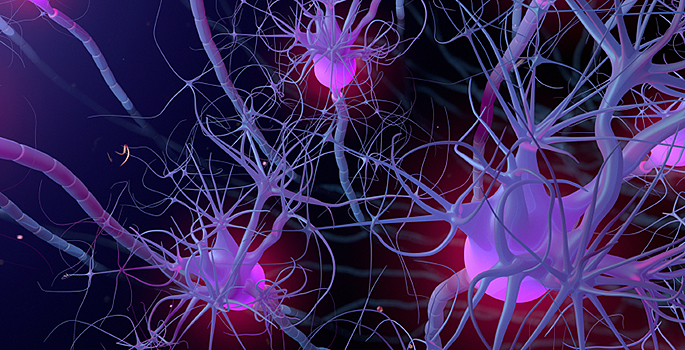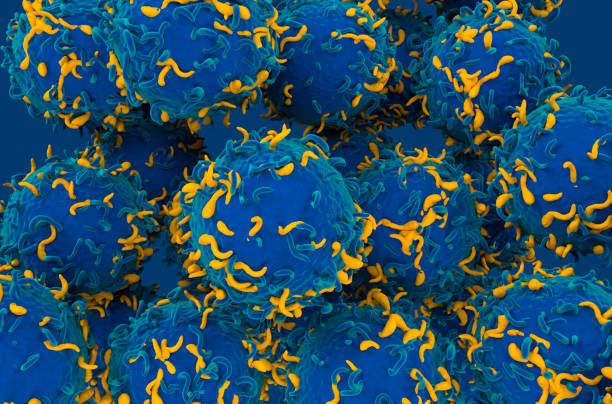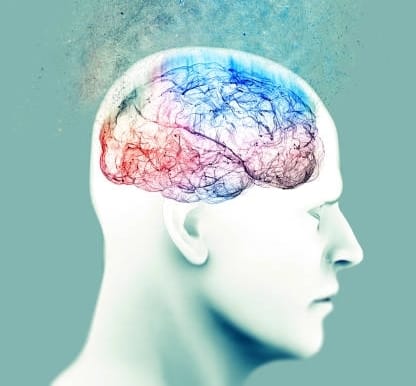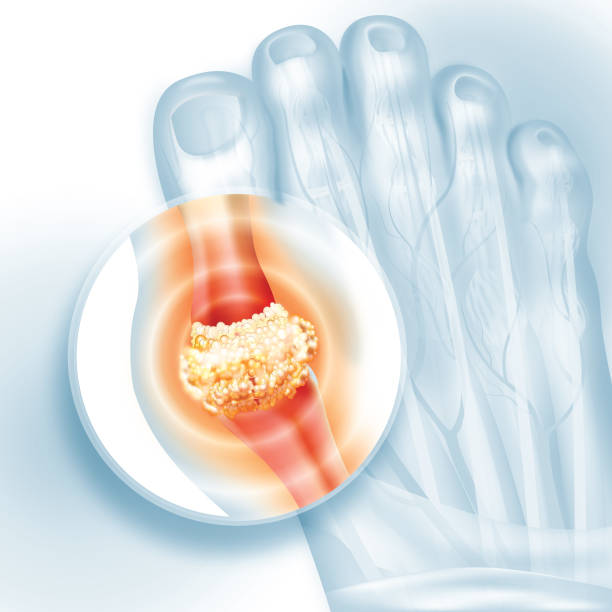Depression is not simply “feeling sad.” It is a shadow that seeps into thought, emotion, and even the rhythms of the body — a condition that can make colors seem duller, time feel slower, and the world feel like it is separated from the sufferer by a thick pane of glass. For centuries, people described depression in poetic or spiritual terms: melancholy, a black dog, a loss of the soul’s light. But today, neuroscience allows us to glimpse the intricate biological machinery behind this deeply human experience.
This is not to say that depression is purely chemical — far from it. Environment, personal history, and psychology weave together with neurobiology to create its complexity. But the chemistry of the brain is where many of these threads converge, shaping moods, thoughts, and the very sense of self. Understanding this chemistry is not only a scientific journey but also an act of compassion, for it reveals depression as neither weakness nor moral failing, but a profound medical condition.
The Brain: A Symphony of Signals
The human brain is an orchestra of about eighty-six billion neurons, each communicating with thousands of others. They speak in the language of electricity and chemistry, sending electrical impulses along axons and releasing chemical messengers — neurotransmitters — into the tiny gaps between cells. These chemicals are the notes of the brain’s music, carrying messages that can excite, inhibit, or modulate the receiving neuron.
In a healthy brain, this symphony is balanced. Neurotransmitters such as serotonin, dopamine, norepinephrine, glutamate, and GABA interact in a precise choreography. The brain adapts to changing circumstances by adjusting the volume of certain instruments: more dopamine when a reward is near, more norepinephrine when danger looms, more serotonin when calm and stability are needed. But in depression, the balance shifts. Some instruments grow too quiet, others too loud, and the music becomes dissonant.
The Serotonin Hypothesis — and Beyond
For decades, the most famous theory of depression was the serotonin hypothesis: that low levels of serotonin, a neurotransmitter linked to mood regulation, were at the root of the illness. This idea gained prominence in the 1960s and 70s, especially as antidepressants like selective serotonin reuptake inhibitors (SSRIs) entered the market. The logic seemed simple — if depression was caused by low serotonin, then increasing serotonin should alleviate it.
However, neuroscience has shown the truth is more complicated. While serotonin is indeed involved in mood regulation, its role is not singular or absolute. Some people with depression have normal serotonin levels; others respond to treatments that do not directly affect serotonin at all. What SSRIs often do is not just increase serotonin availability, but initiate a cascade of changes in brain networks and receptor sensitivity over weeks — suggesting depression involves a deeper, network-level dysregulation.
Thus, while serotonin remains a key player, it is part of a much larger ensemble.
Dopamine and the Loss of Pleasure
Another critical player in the neurochemistry of depression is dopamine, the neurotransmitter of motivation, reward, and pleasure. In healthy functioning, dopamine surges when we anticipate something enjoyable — a good meal, the smile of a friend, the achievement of a goal. It energizes us to act and sustains our drive.
In many forms of depression, dopamine pathways — especially in the mesolimbic system — are underactive. This blunting of the brain’s reward circuitry leads to anhedonia: the inability to feel pleasure. Things that once brought joy become muted, not because the person chooses to stop enjoying them, but because the brain’s chemical signals no longer deliver the same emotional impact.
Neuroimaging studies have shown reduced activity in the ventral striatum and prefrontal cortex in depressed individuals, particularly when exposed to positive stimuli. This is one reason why telling someone with depression to “just do something fun” often fails — the neural response to reward is physically impaired.
Norepinephrine and the Weight of Fatigue
Norepinephrine acts as both a neurotransmitter and a hormone, playing a central role in arousal, alertness, and the stress response. It helps the brain respond to challenges, sharpening attention and preparing the body for action. In depression, norepinephrine activity can be disrupted in two seemingly opposite ways: it may be too low, leading to fatigue, lethargy, and poor concentration, or it may be dysregulated, contributing to anxiety, irritability, and restlessness.
The complexity of norepinephrine’s role illustrates why depression can present so differently in different people. For some, it is a heavy, slowing fog; for others, a restless inner agitation. These differences can stem from how norepinephrine circuits interact with other neurotransmitter systems and with the body’s stress-regulating mechanisms.
Glutamate, GABA, and the New Frontiers
Beyond the traditional monoamine neurotransmitters — serotonin, dopamine, and norepinephrine — modern neuroscience has turned its attention to glutamate and GABA, the brain’s primary excitatory and inhibitory messengers, respectively. Glutamate is essential for learning, memory, and neural plasticity; GABA tempers excessive neural activity, preventing overstimulation.
In depression, evidence suggests glutamate signaling may become abnormal, particularly in the prefrontal cortex and hippocampus. This can impair neuroplasticity — the brain’s ability to adapt and rewire itself — contributing to the sense of mental rigidity often reported in depression.
The discovery that ketamine, an anesthetic and NMDA receptor antagonist, can rapidly relieve depressive symptoms in some people has underscored glutamate’s role. Unlike traditional antidepressants that take weeks to work, ketamine can improve mood within hours, likely by triggering a burst of synaptic growth and resetting dysfunctional networks.
The Role of Neuroplasticity
For decades, scientists believed adult brains were largely fixed, with little capacity to grow new connections. Today, we know the opposite is true: the brain is plastic, constantly reshaping its networks in response to experience, environment, and internal chemistry. This plasticity is crucial to recovery from depression — and its impairment may be central to the illness itself.
One key player here is brain-derived neurotrophic factor (BDNF), a protein that supports the growth and maintenance of neurons. In depression, BDNF levels are often reduced, particularly in the hippocampus, a region involved in memory and emotional regulation. Chronic stress, a major risk factor for depression, can shrink the hippocampus, possibly by lowering BDNF and increasing stress hormones like cortisol.
Antidepressants, psychotherapy, exercise, and even certain dietary patterns may help restore BDNF levels and promote healthy plasticity, suggesting that treatments work in part by giving the brain the tools to rebuild itself.
The Stress Connection: HPA Axis Dysregulation
The link between chronic stress and depression is well established, and neuroscience has traced much of this link to the hypothalamic-pituitary-adrenal (HPA) axis — the body’s central stress-response system. When a threat is perceived, the hypothalamus signals the pituitary to release hormones that prompt the adrenal glands to secrete cortisol.
In the short term, this system is adaptive, helping us respond to danger. But in depression, the HPA axis often becomes dysregulated, leading to persistently elevated or erratic cortisol levels. High cortisol can damage neurons, particularly in the hippocampus, and alter neurotransmitter systems, creating a vicious cycle: stress worsens brain chemistry, which worsens mood, which increases stress.
Inflammation and the Immune System’s Role
One of the most intriguing developments in depression research is the discovery that inflammation — the immune system’s natural response to injury or infection — may also play a role in mood disorders. People with depression often show elevated levels of inflammatory markers such as C-reactive protein and certain cytokines. These immune molecules can cross into the brain and alter neurotransmitter metabolism, reduce BDNF, and disrupt neural plasticity.
This has led to the “inflammatory hypothesis” of depression, which suggests that for some individuals, depression may be driven at least partly by immune system overactivation. This could explain why depression is more common in people with chronic illnesses that involve inflammation, and why some anti-inflammatory treatments show promise for alleviating symptoms.
Networks, Not Just Chemicals
Modern neuroscience increasingly views depression not as a simple chemical imbalance, but as a disorder of brain networks. The default mode network (DMN), active during self-reflection and mind-wandering, is often overactive in depression, contributing to excessive rumination. The salience network, which helps identify important stimuli, may be miscalibrated, making negative information more dominant. The executive control network, involved in planning and regulating behavior, may be underactive.
Neurotransmitter changes are part of the story, but they act within these larger network dynamics. This helps explain why different treatments — from medication to cognitive behavioral therapy to brain stimulation techniques like transcranial magnetic stimulation — can all be effective: they target the network-level patterns in different ways.
The Human Dimension
While brain chemistry explains much, depression is never just a matter of molecules. Each brain is embedded in a life, and the chemistry of depression interacts with personal history, relationships, and culture. Trauma, loss, isolation, and socioeconomic stressors can all alter brain function, not only by shaping thoughts and behaviors but by literally changing neural circuits and chemical balances.
Recognizing the neurobiological basis of depression does not diminish the importance of the human story — it deepens it. It invites us to see depression as an interplay of biology and experience, where treating the mind and the brain are inseparable tasks.
Toward Hope and Healing
Research into the neuroscience of depression has opened new doors to understanding and treatment. It has shown that the brain is not fixed in its suffering — that synapses can regrow, circuits can recalibrate, and chemical imbalances can shift. From traditional medications to emerging therapies targeting glutamate, inflammation, and neuroplasticity, science is gradually expanding the options available.
But perhaps the most powerful message from neuroscience is one of validation: depression is real, rooted in tangible changes in the brain, and recovery is possible. As our understanding deepens, so too does our ability to offer treatments that address both the biological and emotional dimensions of this complex condition.






